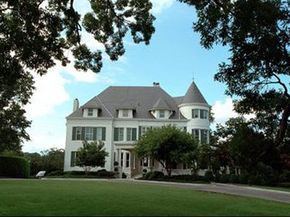Support and Staff for U.S. Vice President
For the first 185 years after the creation of the office of the vice president of the United States, the people who served in that capacity were homeless. At least, there wasn't any federally designated home reserved expressly for the use of the vice president and his family. It was up to the vice president to find and pay for his own home, which was an added expense, since most vice presidents hail from areas of the nation outside of Washington.
That changed in 1974, when Congress mandated that a Victorian mansion on the grounds of the Naval Observatory, located at One Observatory Circle off Massachusetts Ave., become the vice presidential residence. The house was formerly reserved for the chief of naval operations until Congress took custody of it for the vice president. In the 1980s, Vice President George Bush raised private donations for a remodeling of the vice presidential mansion.
Advertisement
In addition to the free house, the vice president is compensated for his or her service in the federal government. The Constitutional framers specified the president would be compensated but didn't mention the vice president. From the outset, however, the vice president received an annual salary -- originally $5,000. By 2008, that salary had risen to $208,100. Pay increases are at the discretion of the president and are granted by percentages of the former pay, then rounded up to the next hundred.
The vice president has a government jet at his disposal. The president's private jet, Air Force One, is his or her exclusive domain; the Boeing 757 the vice president uses is equally decked out -- complete with a fully furnished stateroom -- but use of the plane is shared with the first lady and Cabinet members. When the vice president is aboard, the call sign for the plane becomes Air Force Two.
Like the president, the vice president is protected by a Secret Service detail. Unlike the president, however, the protection doesn't extend to his immediate family, nor does the protection continue after the vice president leaves office (unless he or she ascends to the presidency or is elected to it). Secret Service protection is a 20th century phenomenon for the president; it wasn't until after the assassination of President James McKinley that the agency began serving as presidential bodyguards, and it didn't become permanent until 1913. Secret Service protection is even more modern for the vice presidency. In 1951, the agency officially extended an offer for protection to the vice president if he wanted it, and in 1961, mandatory protection was extended to include the vice president and vice president-elect.
The vice president has two staffs, one for the executive and one for the legislative offices. The Senate furnishes the vice president with a staff of around 40 aides, but the most trusted staff works out of the vice president's office in the Executive Building. It's here that the vice president's chief of staff, national security adviser, legal advisers and speechwriters work to carry out a presidency in miniature. Prior to 1970, the vice president had to finagle free labor out of his aides or pay them himself. That year was the first that Congress appropriated funds for the vice presidential staff [source: Political Dictionary].
For the most part, vice presidents have concentrated mostly on the executive branch. One, however, has argued that because of the position in the legislative and executive branches of government, the vice presidency is ultimately beholden to neither. This vice president was Dick Cheney, who, along with Vice President Al Gore, has done more to expand and shape the office than any others.
Read about the two vice presidents who took an aggressive view of the office next.
